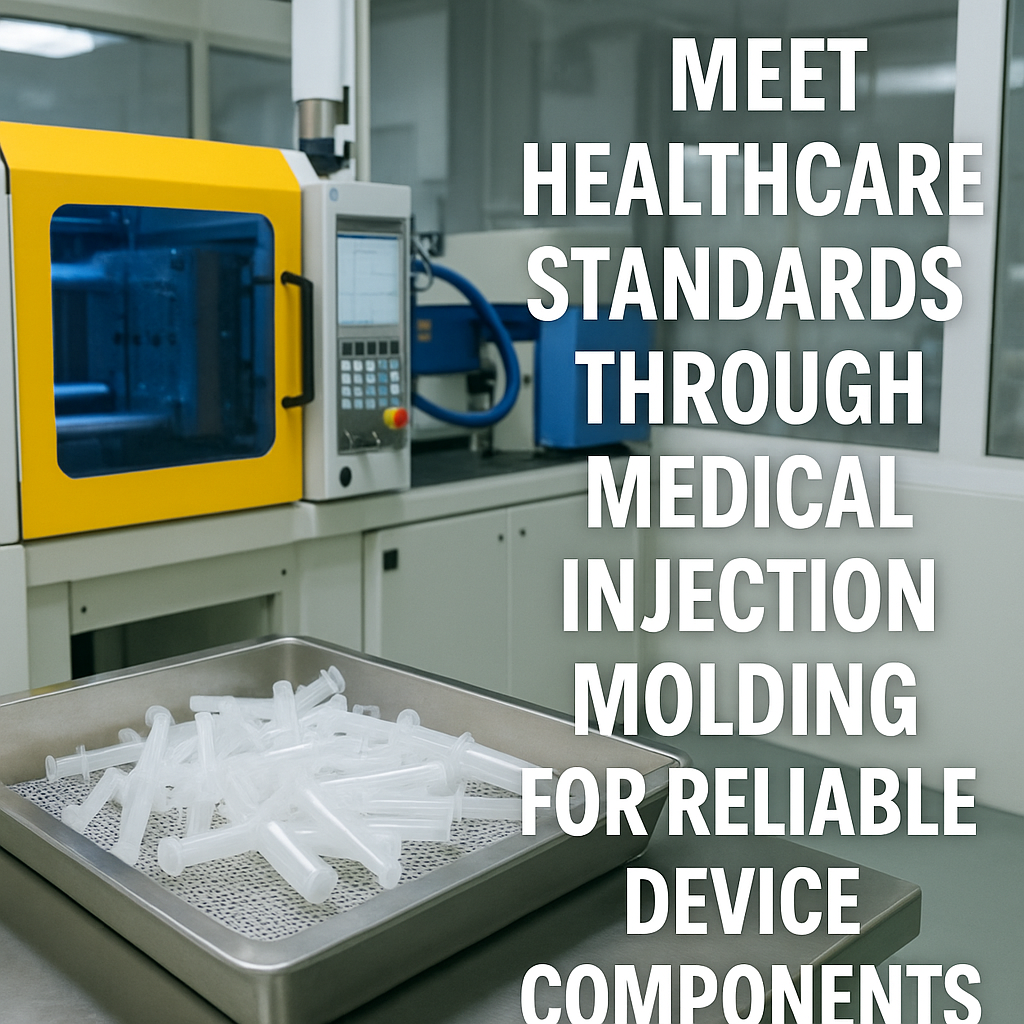Meet Healthcare Standards Through Medical Injection Molding for Reliable Device Components
Meet Healthcare Standards Through Medical Injection Molding for Reliable Device Components

Achieving regulatory compliance and patient safety is non‑negotiable in the medical device industry. From syringe barrels to wearable sensor housings, every plastic component must be produced under rigorous standards to ensure biocompatibility, traceability, and flawless performance. Medical injection molding—when executed by an ISO 13485‑ready partner—delivers these requirements with speed and precision. Here’s how Taiwan‑based INTERTECH (https://www.taiwanmoldmaker.com) helps OEMs meet global healthcare standards while streamlining costs and lead‑time.
1 Regulatory Foundations: ISO 13485 & FDA 21 CFR 820
| Requirement | How Medical Injection Molders Comply |
|---|---|
| Quality Management System (QMS) | ISO 13485 certification governs process controls, documentation, CAPA procedures. |
| Risk Management | FMEA during design & molding validation reduces patient/device hazards. |
| Traceability | Lot‑level resin tracking, mold cavity IDs, and production records retained for ≥ 10 years. |
| Process Validation | IQ/OQ/PQ protocols confirm repeatability of temperature, pressure, and cycle times. |
2 Cleanroom Manufacturing & Contamination Control
-
Class 7 or 8 cleanrooms minimise particulate load for components used in infusion sets, diagnostic reagents, and implant packaging.
-
Stainless‑steel molds and FDA‑listed lubricants reduce risk of leachables.
-
Laminar airflow and HEPA filtration keep viable particle counts within ISO 14644 limits.
INTERTECH Capability: Dedicated Class 8 cell with 100‑ to 320‑ton electric presses and real‑time particle monitoring.
3 Material Selection for Biocompatibility
| Polymer | Typical Medical Use | Compliance |
|---|---|---|
| PP (Medical‑grade) | Syringe barrels, IV connectors | ISO 10993, USP Class VI |
| PC/PC‑ABS | Surgical‑device housings | EtO & gamma compatible |
| PEEK | Orthopedic trial spacers | Autoclave sterilisable |
| TPE/TPU | Wearable straps, seals | Skin‑contact & cytotoxicity tested |
Resin lot certs and MSDS are archived for each production batch.
4 Design‑for‑Sterilisation & Assembly
-
Draft angles and smooth radii facilitate cleaning and reduce bacterial harbours.
-
Living hinges & snap‑fits eliminate metal fasteners, cutting assembly contamination risks.
-
Two‑shot molding integrates soft seals directly onto rigid substrates—no secondary over‑molding.
5 Validation Workflow at INTERTECH
-
Design Review & DFM – Mold‑flow analysis predicts knit lines and air traps.
-
Mold Tool IQ – Gauge calibration, steel certification, and FAT documentation.
-
OQ – Establishes optimal process window (± σ limits for pressure, temp, time).
-
PQ – 3 consecutive conforming lots confirm long‑term control.
-
PPAP / FAIR – Full dimensional report and material cert package for OEM records.
6 Case Study Snapshot
A U.S. diagnostics company required 50 k clear PC cuvettes for COVID‑19 analyzers:
-
ISO 13485 cleanroom molding + automated cavity sorting achieved Cpk > 1.67.
-
100 % vision inspection removed particulates > 50 µm.
-
Delivered PPAP within 5 weeks, enabling FDA 510(k) submission.
Conclusion
Partnering with a certified medical injection molding specialist is the most efficient route to producing safe, reliable, and fully compliant device components. INTERTECH merges cleanroom capability, ISO 13485 QMS, and deep materials expertise to meet the world’s toughest healthcare standards—on time and on budget.
Need compliant medical plastics? Contact INTERTECH for a validation roadmap and quotation.








